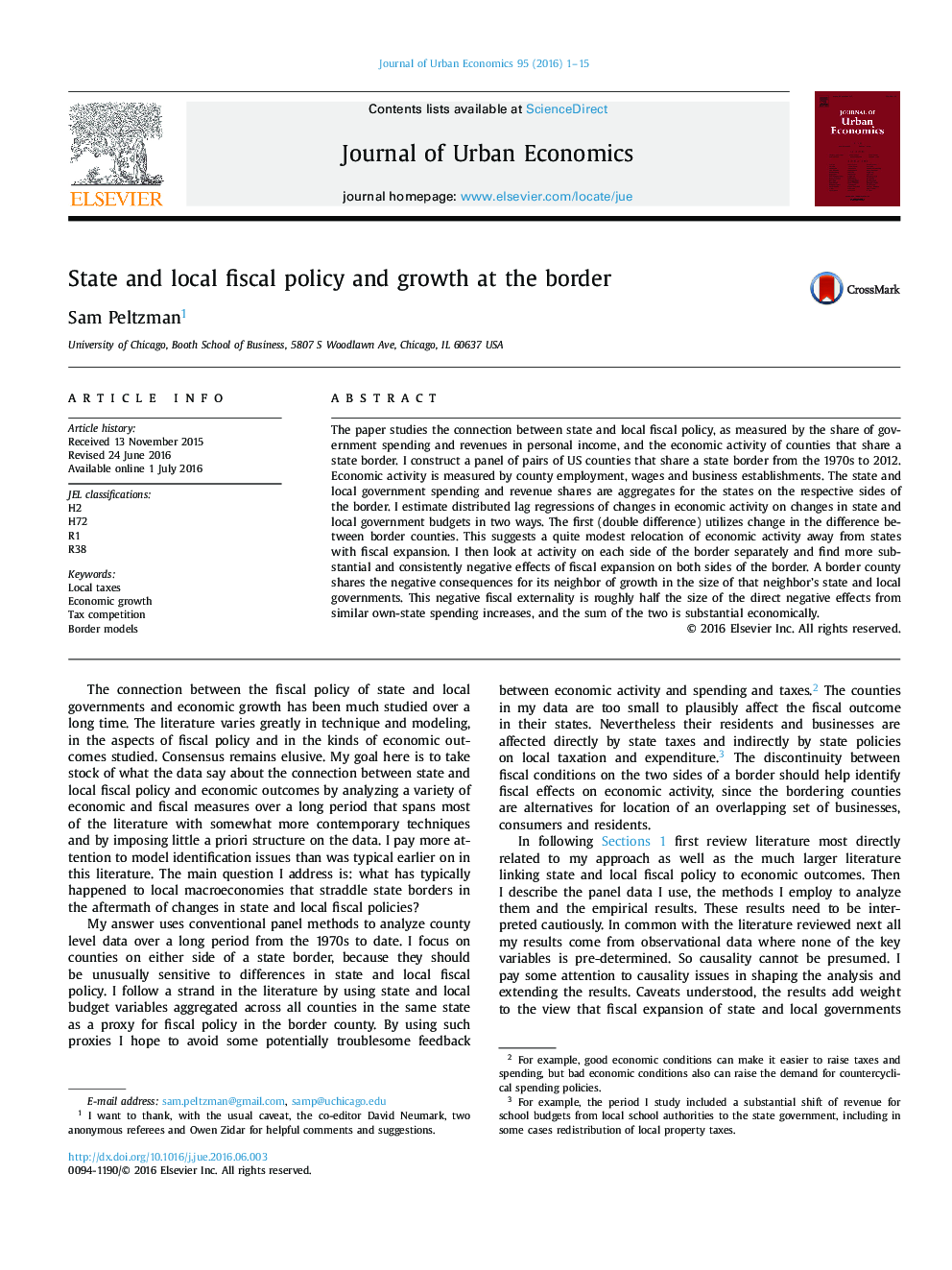| Article ID | Journal | Published Year | Pages | File Type |
|---|---|---|---|---|
| 971757 | Journal of Urban Economics | 2016 | 15 Pages |
The paper studies the connection between state and local fiscal policy, as measured by the share of government spending and revenues in personal income, and the economic activity of counties that share a state border. I construct a panel of pairs of US counties that share a state border from the 1970s to 2012. Economic activity is measured by county employment, wages and business establishments. The state and local government spending and revenue shares are aggregates for the states on the respective sides of the border. I estimate distributed lag regressions of changes in economic activity on changes in state and local government budgets in two ways. The first (double difference) utilizes change in the difference between border counties. This suggests a quite modest relocation of economic activity away from states with fiscal expansion. I then look at activity on each side of the border separately and find more substantial and consistently negative effects of fiscal expansion on both sides of the border. A border county shares the negative consequences for its neighbor of growth in the size of that neighbor's state and local governments. This negative fiscal externality is roughly half the size of the direct negative effects from similar own-state spending increases, and the sum of the two is substantial economically.
